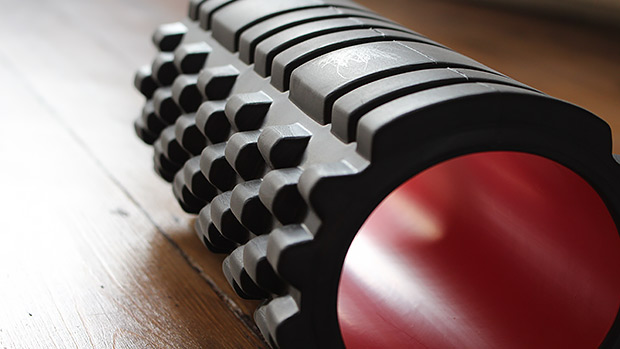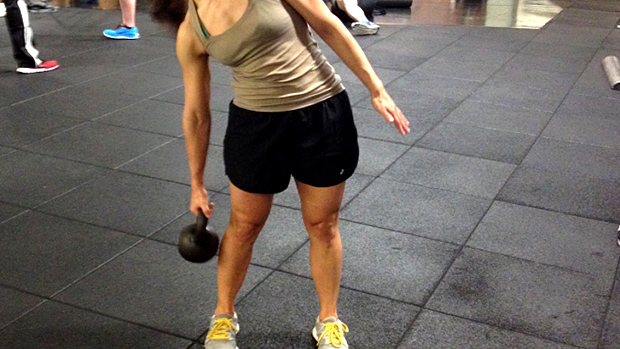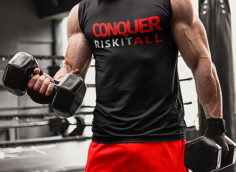Lifting weights has major benefits, but it also has hidden costs like pain, stiffness, injury, and burnout.
To combat these problems, many lifters turn to corrective exercises – stretches, foam rolling, joint mobilizations, and core stability exercises – largely cobbled together from doctors, physical therapists, and massage therapists.
But exercises that live in this foggy, no-man's land between fitness and therapy often fail on two fronts: corrective movements and exercise. As a result, a lot of people have become overly cautious, focusing on the minutiae of self-care and injury avoidance rather than working intelligently to build a strong, robust, and capable body.
Fortunately, there are better levers you can pull other than foam rolling and all the usual suspects that will keep you in the game while avoiding costly injuries. Simply adopt the following three strategies:
Everyone has their darlings – exercises you love to do, or more likely, think you're supposed to love to do, despite how mismatched they may be to your actual goals, anatomy, training age, or injury history.
The truth is, not every exercise is a good fit for every exerciser, but people stay married to them anyway. But these are nothing more than stories we've been told, a script someone else wrote – ones that we follow blindly and that stand in our way, trip us up, and shackle us to unhelpful beliefs.
I lost count of the number of times I grinded through painful shoulder injuries – not to mention the hours lost to foam rolling and stretching trying to reverse the damage – before I finally swore off straight-bar bench presses.
It was a bad relationship from the start, but I wanted it to work so badly that I was willing to endure seemingly any amount of abuse to stay in it. Why? Because people, and I'm no exception, are susceptible to groupthink – an "us versus them" narrative that makes us feel like we belong to a special club.
Well, screw that.
Mike Boyle says that the best way to avoid burning your hand is to stop touching hot stoves. Wise words from an experienced coach who, undoubtedly, watched people do just that with their exercise selection.
It's time to slay the sacred cows that are no longer serving you. Think tactically, not emotionally. Kill those cows before they kill you. Here are a few alternatives to consider:
Instead of the Back Squat, do:
- Front Squat
- Leg Press
- Hack Squat
Instead of the Straight-Bar Deadlift, do:
- Trap Bar Deadlift
- RDL
- Barbell Hip Thrust
Instead of the Barbell Bench Press, do:
- Dumbbell Bench Press
- Incline Dumbbell Press
- Machine Press
Instead of the Military Press, do:
- Landmine Press
- Dumbbell Press
- Incline Bench Press
After a few weeks of doing these alternate movements, the sacred cows should all have passed on to their new incarnations and you'll be freed from doing many of those annoying and boring rehab moves.
Nobody wants to spend more time in deficit-correction mode, trying to "fix" aches and pains via low-intensity, corrective exercises that don't look or feel like training at all. Rather than emphasizing correctives, focus on constraints.
Constraints – like the giant rubber bumpers they stick in the bowling alley gutter for kids' birthday parties – work by manipulating the environment, taking away bad movement options, and creating pathways for good ones.
Here are some "problems" that easily lend themselves to a constraint-based modification:
The Sloppy Deadlift
There are really only two things that can go wrong in a deadlift: either you don't have the range of motion to pull from the floor so you end up rounding your back or bending your knees too much, or you can't figure out how to shift your center of gravity back far enough to make the motion meaningfully different than a squat.
In the case of insufficient range of motion, simply elevate the weights on a small box until you find a height that makes sense for your capabilities.
Or, if you have trouble shifting your weight back, slide a weight plate or wedge under the front half of your foot to force your weight back on your heels, as shown in the video below.
The Shallow Squat
Half-ass squats are the bane of every serious lifter's existence. Impediments to proper execution of a full squat include stiff ankles or stiff thoracic spine, poor motor control, protective tension, or unfavorable anthropometrics.
The truth is, some people just aren't set up to be good at squats. See every tall guy ever. The good news is that 95% of the time, sticking a heel lift underneath the heels – shifting the center of gravity forward – instantaneously transforms the shallow squat into an entirely different exercise.
The Painful Chest Press
Achy shoulders and elbows are common side effects of heavy pressing. Here's the thing, though: The position of the rib cage, spine, and pelvis meaningfully influences the health and performance of the rest of the body.
One of the most common things you see with chest pressing is an exaggerated arch in the lower back, which changes the dynamics of the shoulder joint. Some people compensate for this by putting their feet up on the bench, but that just decreases stability. Put your feet on a wall instead. It takes away the arch while providing a reference point for stabilization.
The Over-Extended Overhead Press
Does your overhead press look more like a lower back extension? When you lack overhead mobility, the body "gets overhead" by pulling the spine forward instead of pushing the arms up and back. Not good.
Here's the fix: "Bring the floor up" by sitting on a short box with a step underneath your feet. This flexes the hip and keeps the lower back from going into extension.
The Valgus Lunge
Most people have a hard time controlling movement in the frontal plane. This is doubly true for split-stance exercises like lunges. As a result, we often see knee valgus – the knee collapsing inward – during lower body exercises.
This calls for a foam roller, but not in a way you might expect. Instead of rolling on it, we're just going to use it to block adduction across the midline when performing lunges.
We're all familiar with the cautionary tale of the newbie lifter storming out of the gates, only to flame out with an injury after just a few weeks. As clichéd as this is, it isn't unique to beginners.
Injuries happen when load exceeds tissue tolerance. Load could be the amount of weight on the bar, number of sets and reps per workout, or the number of times a week you train.
But when load slightly exceeds tissue tolerance and adequate time is given for recovery, we generate positive adaptations. Taking on too much, too soon, though, can drop us into a physiological hole we can't escape.
In other words, there's a sweet spot. Nothing much happens below this sweet spot, but hover above it too often or too long and your risk of injury increases.
We know from sports science research that injuries occur most frequently when acute workloads (the loads encountered in a single workout) spike above ten percent of chronic workloads, which are the average amounts of load your body is used to, usually measured in four-week increments.
Put differently, keeping chronic workloads high – with regular exercise – increases resiliency by creating a buffer against injury. It's protective because the higher your chronic workload is, the harder it is to exceed it and get into the "danger zone" where your risk of injury increases.
Instead of falling down increasingly esoteric biomechanical rabbit holes trying to "fix" yourself, use this three-step formula for staying healthy while simultaneously progressing toward your goals.





